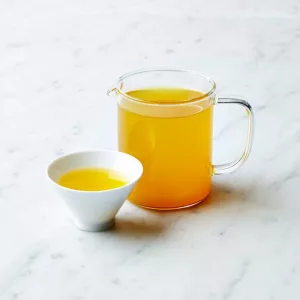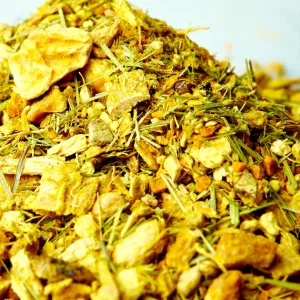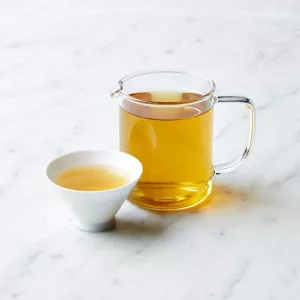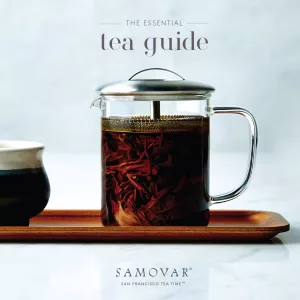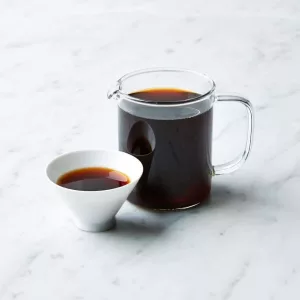
Water temperature also influences the final cup, and tea masters are vigilant about heating their water optimally to match the tea they are brewing. However, they determine the “readiness” of the water in different ways-visually, auditorially, and electronically.
Some look for visual signs of the water temperature to determine when the water is heated properly for the particular tea they intend to brew.
You may have heard tea masters talk about looking for “fish eyes” in the water. This is when medium bubbles form just before the water moves towards a roiling boil. This is when the water is ready for oolongs, generally. The way the steam leaves the spout of the kettle—in wisps or in gusts–also signals the water’s readiness for some tea masters.
Lu Yu said:
When at the edges it chatters like a bubbling spring and looks like pearls innumerable strung together, it has reached the second stage. When it leaps like breakers majestic and resounds like a swelling wave, it is at its peak. Any more and the water will be boiled out and should not be used.2
David Lee Hoffman listens to the water. During our tea time together, as the water began to get closer to boiling, he stopped the conversation and said “Listen!” as he waited in anticipation for exactly the right crackling noise to emit from the iron kettle over the fire. A skilled technical sound man, Hoffman has a keenly trained ear which he puts to good use as a tea master. He said he also pays attention to the way the steam rises from the spout at different temperatures.
Many tea masters simply use automated kettles that brew water to a pre-selected temperature, and still others in the slow food movement who like to be numerically exacting without the aid of electronic technology, will use a simple kitchen thermometer meant for liquids. (Note: these thermometers go up to only about 220ºF and will melt in the oven).
I rely on a combination of visual and auditory methods to brew water to the right temperature. I watch for the intensity and velocity of the steam coming from the spout of the kettle, and if I am busy doing something while the kettle is heating, I listen for a certain sound I have become acquainted with that tells me how close the water is to boiling and always try to catch it before it boils. If the whistle blows before I reach the kettle, I’ve failed.
I just recently had to buy a new tea kettle and notice that it makes different sounds than the old one, so I am having to learn the language of this new tea kettle.
You will also want to become familiar with the relationship between tea type and water temperature. Here are some basic guidelines, which are meant to be experimental bases:
Green and white teas tend to require cooler water temperatures, usually between 160-185ºF; oolongs do well in higher temperatures, approximately 185-205ºF; and black teas can be steeped in water 205º to boiling (212ºF). If you play around, you might notice that steeping an oolong, for example, in cooler-than-optimal water will bring out more sweet notes in the tea.
This is just a brief overview of water for tea. Each aspect regarding water for tea is a subject in itself that some experts delve into one or the other with great vigor and in great depth. Collecting and brewing good water is the first step to brewing good tea. However you brew it– drink, dream, share and be merry.
-Jennifer for Samovarlife.com
Jennifer Leigh Sauer, is a freelance photographer, award-winning video journalist, and author based in the San Francisco Bay Area. She is the author of The Way to Tea: Your Adventure Guide to San Francisco Tea Culture (2007). Click here to reach her by email.
1, 2: The Classic of Tea, translated by Francis Ross Carpenter (Ecco Press, 1974)

